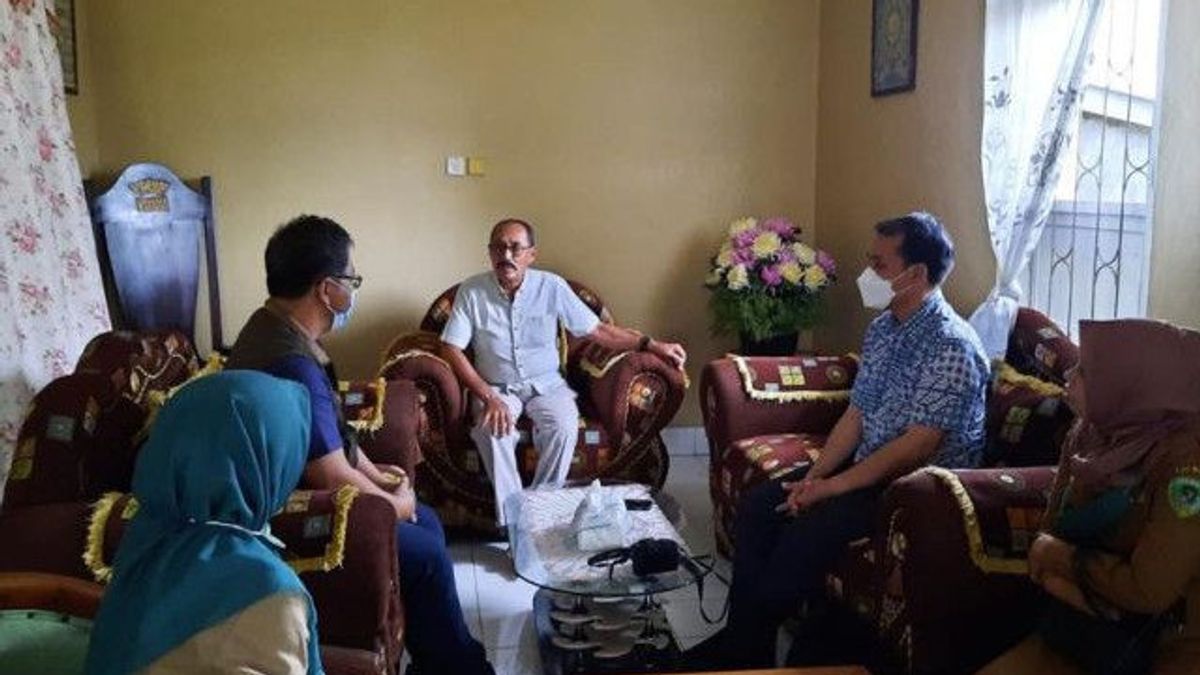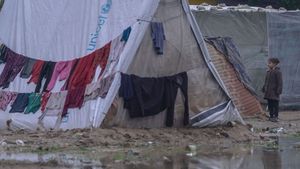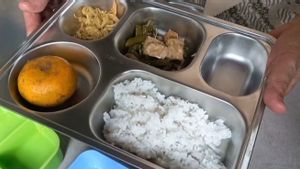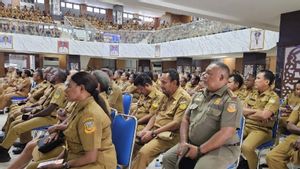JAKARTA - A report from the Ministry of Education, Culture, Research and Technology (Kemendikbudristek) states that indigenous peoples have responded to the COVID-19 pandemic in various ways.
"In a report that uses a qualitative approach through observation, face-to-face interviews, telephone interviews, online surveys, and recording information from partners in the field, it is noted that indigenous peoples in Indonesia have responded to this pandemic in various ways, according to their characteristics, knowledge, and skills. and their experiences are also different," said Director of Belief in One God and Indigenous Peoples (KMA) Kemendikbudristek, Sjamsul Hadi, in a statement, Tuesday, February 15, quoted from Antara.
Although COVID-19 is a new disease, some indigenous peoples already have knowledge about infectious diseases that have been experienced before, so they are more careful.
For example, the Punan Tubu indigenous people in Kalimantan who have known the plague as kelapit, which is characterized by healthy people who are sick today and can die tomorrow. To avoid contagion, residents were taught to immediately move away into the forest and live separately in small groups consisting only of the nuclear family. While those who are sick will be left in a special place that has been marked.
The Topo Uma indigenous people in Central Sulawesi also do the same thing. They already have local knowledge about infectious diseases that are integrated in spatial and village patterns. The distance between villages in this customary area is relatively far, besides that each family has a polompua, a kind of garden house that can be a place to isolate themselves while carrying out gardening activities.
The tradition of entering and leaving the forest is also practiced by the Orang Rimba in Bukit Duabel, Jambi. Orang Rimba call the tradition as besesandingon, which means they will enter the forest and stay there for a certain time. During the besesandingon period, the Orang Rimba also forbade foreigners or outsiders to enter.
“This is a kind of Orang Rimba's way to prevent disease transmission. Unfortunately, this tradition of going into the forest carried out by the indigenous peoples of Punan Tubu (Kalimantan), Topo Uma (Central Sulawesi), and Orang Rimba (Jambi) is increasingly difficult to carry out because they have lost a lot of customary forest areas that were originally their goal and focus. for hunting and nomadic life,” he explained.
For indigenous peoples who live permanently and in ulayat areas, such as the Baduy in Banten, their response to the pandemic is done by closing or tightening the entrance to their territory. Since the pandemic, Baduy Dalam has severely restricted the arrival of outsiders, so that they are able to keep their village free of COVID-19 cases.
A similar regional quarantine was also carried out by the Boti indigenous people in South Central Timor Regency, East Nusa Tenggara, who closed the village from visits from outsiders and asked the king to temporarily close the king's house from guest visits, as well as implement health protocols such as wearing masks for the Boti tribe.
"An important note from the successful quarantine of indigenous territories such as in Baduy and Boti is that they have strong leadership, social capital and food security and are able to support their needs during the pandemic."
However, some indigenous people think that the COVID-19 outbreak will not hit, and even tend to deny the risks. They think that COVID-19 is a disease of urban people that is unlikely to affect them. Such a perception exists among indigenous peoples in Nusak Dengka, Oelua Village, Northwest Rote District, Rote Ndao Regency. People believe that COVID-19 exists but they believe that the virus will not reach their communities. So they continue to carry out social and economic activities as usual.
For indigenous peoples who are open and semi-closed, such as in Rote Ndao, Outer Baduy, Osing, and others, the mitigation efforts that need to be done are more integrated health, socio-economic, and cultural mitigations. The problems faced by open indigenous peoples are more complex because they are not fully able to survive on their own and require external touch or assistance. The amount of disinformation related to COVID-19 circulating, the lack of health facilities, and the stigma against those who report themselves are problems that must be followed up with better risk socialization and communication.
The English, Chinese, Japanese, Arabic, and French versions are automatically generated by the AI. So there may still be inaccuracies in translating, please always see Indonesian as our main language. (system supported by DigitalSiber.id)













